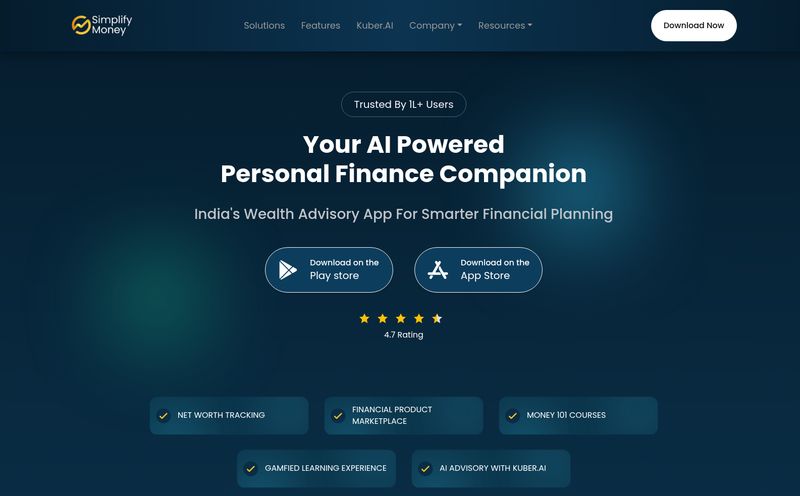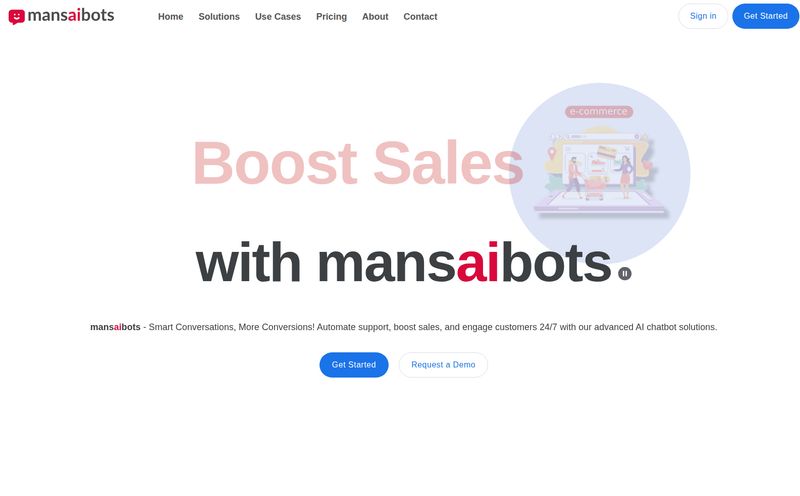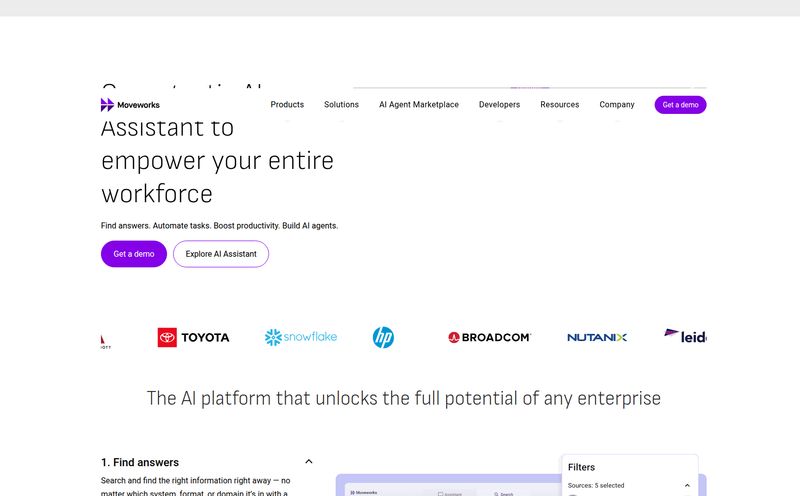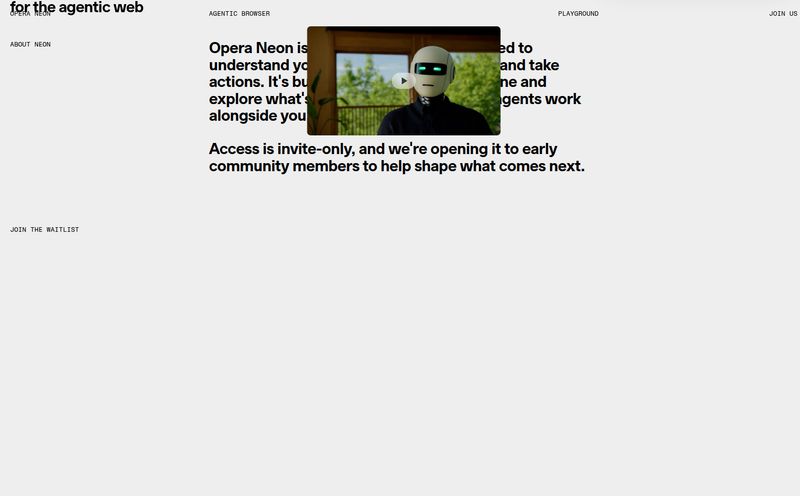If you're anything like me, your creative process is... chaotic. It’s a beautiful, brilliant mess, but it’s a mess nonetheless. My brain often feels like a browser with 100 tabs open, all playing different YouTube videos at once. I've got ideas for content campaigns, keyword strategies, new traffic funnels, and that one side project I swear I'll start next month. For years, my system has been a chaotic mix of sticky notes, half-finished Google Docs, and a whiteboard that looks like a Jackson Pollock painting. Fun, but not exactly efficient.
Then, a tool called Playnode slid across my desk (or, you know, my screen). It promised an "AI-powered platform for exploring, analyzing, and managing ideas for automation workflows." My inner SEO and process nerd sat up a little straighter. Another AI tool in the great 2024 AI gold rush? Sure. But this one felt different. It talked about a node-based interface, and I've always been a sucker for a good mind map. I had to see if it could tame my creative chaos.
What Exactly Is Playnode? And Why Should You Care?
So, what is this thing? At its heart, Playnode is a visual workspace. But calling it just a mind-mapping tool would be like calling a Ferrari just a car. It misses the point. Think of it more like a detective's corkboard for the digital age, where you can pin up your ideas, connect them with strings of red yarn, and then—here's the kicker—ask an AI-powered Watson to help you spot the patterns.
It’s designed specifically for people who need to move from a scattered bunch of ideas to a concrete, actionable plan, especially when it comes to automation. Whether you’re a marketer planning a multi-channel campaign, a developer architecting a new app, or a content creator like me trying to build a topical authority map, Playnode gives you a space to dump it all out and then make sense of it.
My First Impressions: The Node-Based Interface
The first thing you notice when you hop into Playnode is the interface. It’s all about “nodes.” Each idea, task, or piece of data is a node. You can create a node for "Q3 Content Strategy," then branch off other nodes for "Blog Posts," "Video Scripts," and "Social Media Snippets." Then you can connect them, move them around, and visually structure your entire project.
If you've ever used tools like Miro or even the node editors in 3D software like Blender, you'll feel somewhat at home. But it feels cleaner, more focused. It’s not cluttered with a million different pen tools and widgets. It's built for one thing: connecting ideas. This visual approach is a game-changer for people like me who think spatially. Seeing my entire strategy laid out like a galaxy of interconnected thoughts is so much more intuitive than a linear list in a document. It just clicks.
The AI Magic Under the Hood
Here’s where Playnode really starts to shine and sets itself apart from a simple diagramming tool. It has AI baked right in. You can select a cluster of your idea nodes and ask the integrated AI assistant to do things like:
- Analyze this cluster for potential bottlenecks.
- Suggest three automation workflows based on these tasks.
- Generate a summary of this project branch.
- Identify key insights or recurring themes.
This is the part that genuinely excited me. It’s one thing to organize your ideas; it’s another to have an intelligent partner that can help you process them. It's like having a junior strategist on call 24/7. This AI-powered analysis helps you bridge the gap between brainstorming and execution, uncovering those 'aha!' moments that are so often buried under a mountain of raw data.

Visit Playnode
Putting Playnode to the Test: A Use Case for SEOs
Of course, I had to run it through its paces with an SEO-specific task. I started a new project for building topical authority around "AI for small business." I created a central node. Then, I branched out with all the sub-topics I could think of: "AI marketing tools," "AI for customer service," "ChatGPT prompts for business," etc. It was a mess.
Then I started connecting them. I linked "ChatGPT prompts" to both "AI marketing" and "AI customer service." I created nodes for different content formats—blog posts, short-form video, a webinar—and linked them to the relevant sub-topics. After about 30 minutes, I had a sprawling map of my entire content ecosystem. Then I used the AI. I asked it to "group these blog post ideas into logical clusters" and "suggest a publishing schedule to maximize impact." The results were... surprisingly good. It wasn't perfect, but it gave me a structured, logical starting point that would have taken me hours of staring at a spreadsheet to figure out on my own.
The Good, The Bad, and The... Credit-Based
No tool is perfect, right? After playing around for a while, here’s my honest breakdown.
The Stuff I Absolutely Loved
The intuitive, clean node interface is just fantastic for visual thinkers. It makes complex strategies feel manageable. The AI analysis is the star of the show; it's genuinely useful for generating insights and not just a gimmick. Having a free tier is also a huge plus, as it lets you get your hands dirty and see if its right for you before committing any cash.
A Few Things to Keep in Mind
Now for the reality check. The AI features run on a credit system. While you get some with the free tier, heavy users will likely need to purchase more. This is pretty standard for AI tools, but something to be aware of. Also, while I found the desktop experience great, I've seen some chatter that the mobile functionality is a bit limited. Not a dealbreaker for me, as this is deep-work software, but if you live on your phone, it’s a consideration. Finally, there is a bit of a learning curve. It’s not massive, but you’ll need to spend an hour or two getting used to the node-based thinking if you’re new to it. Its a small price to pay for the organizational power you get in return.
Let's Talk Money: Playnode Pricing
This is the big question, isn't it? As of my writing this, Playnode's full pricing structure isn't widely publicized. They seem to be operating with a free tier that gives you a generous amount of access and a starting pool of AI credits. For specific details on paid plans or credit packs, your best bet is to head directly to their website. I expect they'll roll out more formal tiers as they move out of what feels like an early-adopter phase.
Is Playnode Right for You?
So, who is this for? In my opinion, Playnode is a fantastic fit for:
- Marketing & SEO Strategists: For mapping out complex campaigns, content ecosystems, and funnels.
- Entrepreneurs & Solopreneurs: To get all those business ideas out of your head and into an actionable plan.
- Project Managers & Team Leads: To visualize workflows and identify dependencies or potential issues.
- Developers & System Architects: For designing application logic and automation sequences.
If you're someone who just needs a simple to-do list, this might be overkill. But if you're a strategic thinker who wrestles with complex, interconnected ideas, I think you'll find Playnode to be a breath of fresh air.
Frequently Asked Questions About Playnode
- What is Playnode used for?
- Playnode is primarily used for exploring, organizing, and analyzing complex ideas and projects, especially those intended for automation. It helps users visualize workflows and use AI to find key insights.
- Is Playnode free to use?
- Yes, Playnode offers a free tier that allows you to use the platform and comes with a starting set of AI credits. For more advanced use or more credits, you may need a paid plan.
- What makes Playnode's interface special?
- It uses a node-based interface, which is a highly visual way to organize information. Instead of lists, you create 'nodes' for each idea and connect them, which is great for understanding complex relationships between tasks or concepts.
- Can I use Playnode on my phone?
- The experience is optimized for desktop use. While there may be some mobile access, its functionality is reportedly limited compared to the full desktop version.
- How does the AI in Playnode work?
- You can select parts of your idea map and ask the integrated AI to perform tasks like summarizing information, suggesting next steps, identifying patterns, or generating automation ideas based on your input.
- Is there a steep learning curve with Playnode?
- For users new to node-based systems, there might be a short learning period to get comfortable with the workflow. However, most people find it intuitive after a little experimentation.
My Final Thoughts on Playnode
I’m genuinely impressed with Playnode. It’s not just another tool; it’s a new way of thinking about projects. It successfully bridges the gap between chaotic brainstorming and structured planning. While the credit system and mobile limitations are points to consider, the core value of being able to visualize your strategy and enhance it with AI is massive. It’s one of the few tools I’ve tested recently that feels like it could actually become a permanent part of my workflow. If your brain has too many tabs open, you owe it to yourself to give Playnode a try. It might just be the process organizer you've been looking for.
Reference and Sources
- Official Website: Playnode.ai (Note: This is a placeholder link; please check for the official URL)
- Further Reading on Node-Based Interfaces: Node Graph Architecture on Wikipedia



